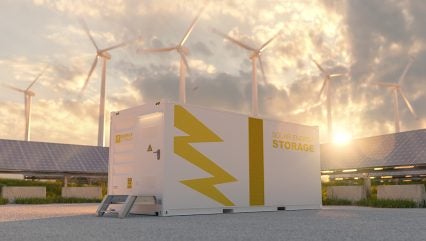
Global investment in clean energy is set to reach $2 trillion in 2024, almost double that for fossil fuels, helped by improving supply chains and lower costs for clean technologies, according to the International Energy Agency’s latest World Energy Investment Report.
The new report warns, however, that there are still major imbalances and shortfalls in energy investment flows in many parts of the world. It highlights the low level of clean energy spending in emerging and developing economies (outside China), which is set to exceed $300 billion for the first time – led by India and Brazil. Yet this accounts for only about 15% of global clean energy investment, far below what is required to meet growing energy demand in many of these countries, where the high cost of capital is holding back the development of new projects.
In addition to economic challenges, grids and electricity storage have been a significant constraint on clean energy transitions. But spending on grids is rising and is set to reach $400 billion in 2024, having stagnated at around $300 billion annually between 2015 and 2021. Meanwhile, investments in battery storage are taking off and set to reach $54 billion in 2024 as costs fall further. Yet again, this spending is highly concentrated. For every dollar invested in battery storage in advanced economies and China, only one cent was invested in other emerging and developing economies.
Is switching increasing cost of energy
A common accusation is that the cost of switching to renewables will make energy more costly, and potentially unaffordable for people and households with low incomes.
A new report by the IEA, Strategies for Affordable and Fair Clean Energy Transitions, shows that this is not true and that, on the contrary, speeding up the move to clean energy technologies improves the affordability of energy and can relieve pressures on the cost of living more broadly.
In many cases, clean energy solutions are already more cost competitive over their lifespans than those reliant on conventional fuels like coal, natural gas and oil. For example, solar PV and wind are the cheapest options for new generation.
The benefits of a faster energy transition and growing shares of renewables – such as solar and wind, which have lower operating costs than fossil fuel alternatives – would filter down to consumers.
The report finds that incentives and greater support, particularly targeted at poorer households, can improve the uptake of clean energy technologies. This would allow all consumers, especially those who are less well-off, to fully benefit from these technologies and the cost savings, while also supporting efforts to reach international energy and climate goals.
The report sets out a series of measures, drawing on proven policies from countries around the world, that governments can deploy to make clean technologies more accessible to all people. Notably these include delivering energy efficiency retrofit programmes to low-income households or obliging utilities to fund more efficient heating and cooling packages.






